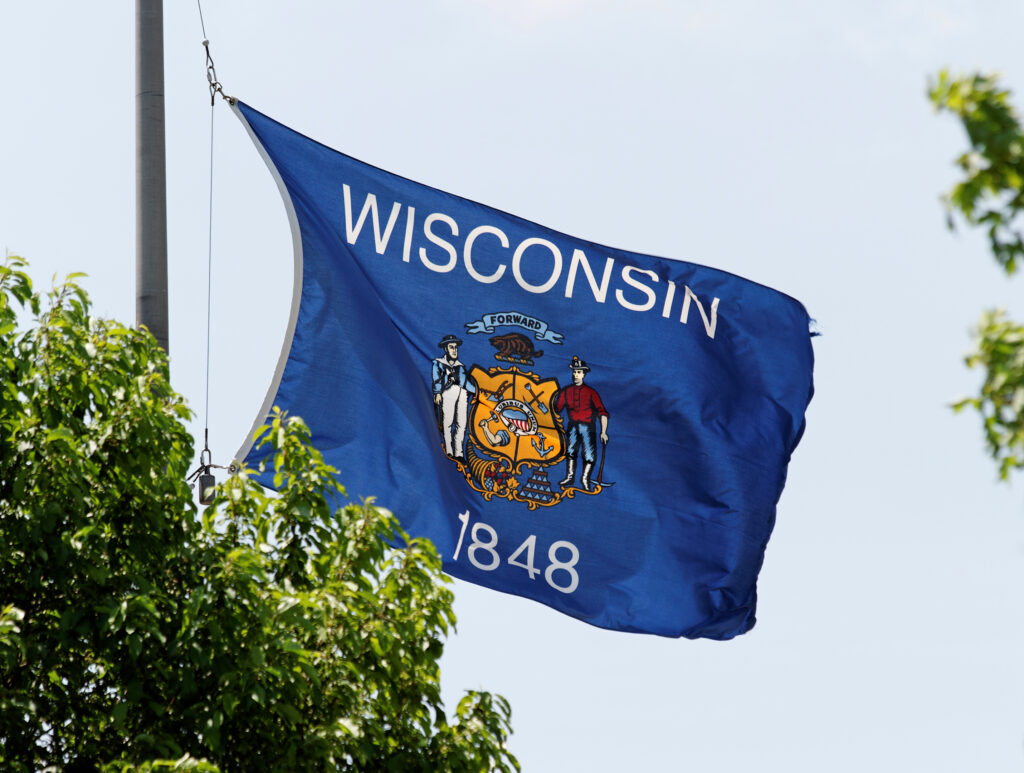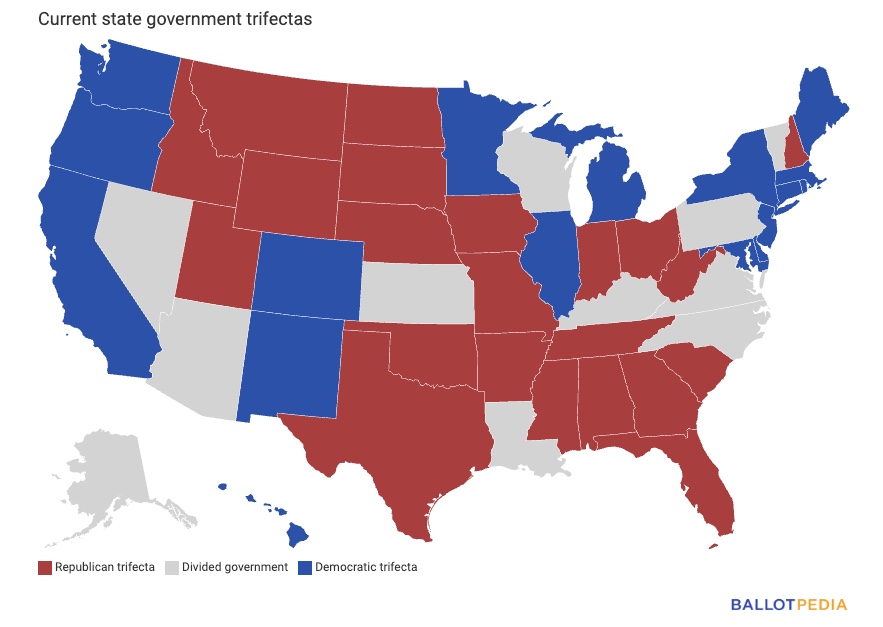This post originally appeared at https://www.badgerinstitute.org/wisconsin-and-iowa-can-rule/

America is choosing sides and Wisconsin — given the lurch to the left along its borders — can greatly benefit.
Minnesota, Illinois and Michigan are all now among America’s 17 thoroughly blue states where Democrats control both chambers of the legislature as well as the governor’s mansion. We are just one of 11 states with divided government, according to Ballotpedia, and Iowa is one of 22 states that is totally red.
That means of our 72 Wisconsin counties, 21 now border a thoroughly blue state. Only three — Grant, Crawford and Vernon — border a completely red state, Iowa. And portions of two of those counties — Vernon and Grant — also border Minnesota or Illinois.
Put another way, there is only one county in all of purple Wisconsin that borders a red state and a red state alone: Crawford — which, for what it’s worth, sends a few dozen more people across the Mississippi River to Iowa’s Clayton County than it takes in, according to 2020-21 IRS migration numbers.

Little Crawford County is not proof in and of itself of anything, especially since Iowa is still transitioning to truly conservative policy. But it’s well documented that Americans just about everywhere are flocking to more conservative states.
The American Enterprise Institute’s Mark Perry has analyzed the top ten “inbound” and “outbound” states. In this piece, he compares everything from party control of state government to business climate, tax burdens, state fiscal health, electricity and housing costs, economic outlook and performance, and labor market dynamism.
“There is empirical evidence that Americans and businesses ‘vote with their feet’ when they relocate from one state to another, and the evidence suggests that Americans are moving from blue states that are more economically stagnant, fiscally unhealthy states with higher tax burdens and unfriendly business climates with higher energy and housing costs and fewer economic and job opportunities, to fiscally sound red states that are more economically vibrant, dynamic and business-friendly, with lower tax and regulatory burdens, lower energy, and housing costs and more economic and job opportunities,” according to Perry.
Among the big losers of people: our neighbors: Minnesota and Illinois.
Illinois has been under complete Democratic control since J.B. Pritzker won the race for governor in 2018. Democrats gained complete control of Minnesota when they took the Senate last November. In Michigan, Democrats completed a trifecta at the same time when Gov. Gretchen Whitmer easily won reelection and her party took control of both the Senate and House.
Democrats in all those places haven’t been shy about using their power to push progressive stands on everything from abortion and transgender rights to immigration, voting rights for felons and abolishment of right-to-work.
Wisconsin has not followed suit. Both the Senate and the Assembly are firmly in Republican control while Tony Evers, a Democrat, handily won his 2022 election. We still have an amalgamation of both progressive and conservative policies. We’re definitely more attractive than Illinois and Minnesota and, increasingly, Michigan. But we could be a whole lot better.
The political changes in neighboring states are too recent to allow any sort of definitive statistical analysis of migration trends, but it’s interesting to look at where people have been moving in recent years.
Wisconsin gained a net of 10,558 people from Illinois and Minnesota between 2020 and 2021, gained 304 from Iowa and lost (coincidentally) the exact same number, 304, to Michigan.
It will be interesting to see what happens with migration between Iowa and Wisconsin in 2026. As recently as 2018, Iowa had a top individual income tax rate of 8.98% and is still at 6% but is moving in the next three years to a flat tax of 3.9%. Wisconsin, for now, remains stuck with a top individual rate of 7.65%, but there is a chance that it can be lowered during current budget discussions.
If Wisconsin can add to the significant progress apparently about to be made in education reform, enact lower taxes, reduce regulation, and hang on to right-to-work and Act 10, among other things, we will be in a good position — even as a purple state — to continue to gain from our neighbors’ wrong-headed embrace of progressive governance.
Down the road a little, especially if we can get a flat tax of our own, there will be boom days among the borders.
Mike Nichols is the President of the Badger Institute. Permission to reprint is granted as long as the author and Badger Institute are properly cited.
The post Wisconsin (and Iowa) Can Rule appeared first on Badger Institute.